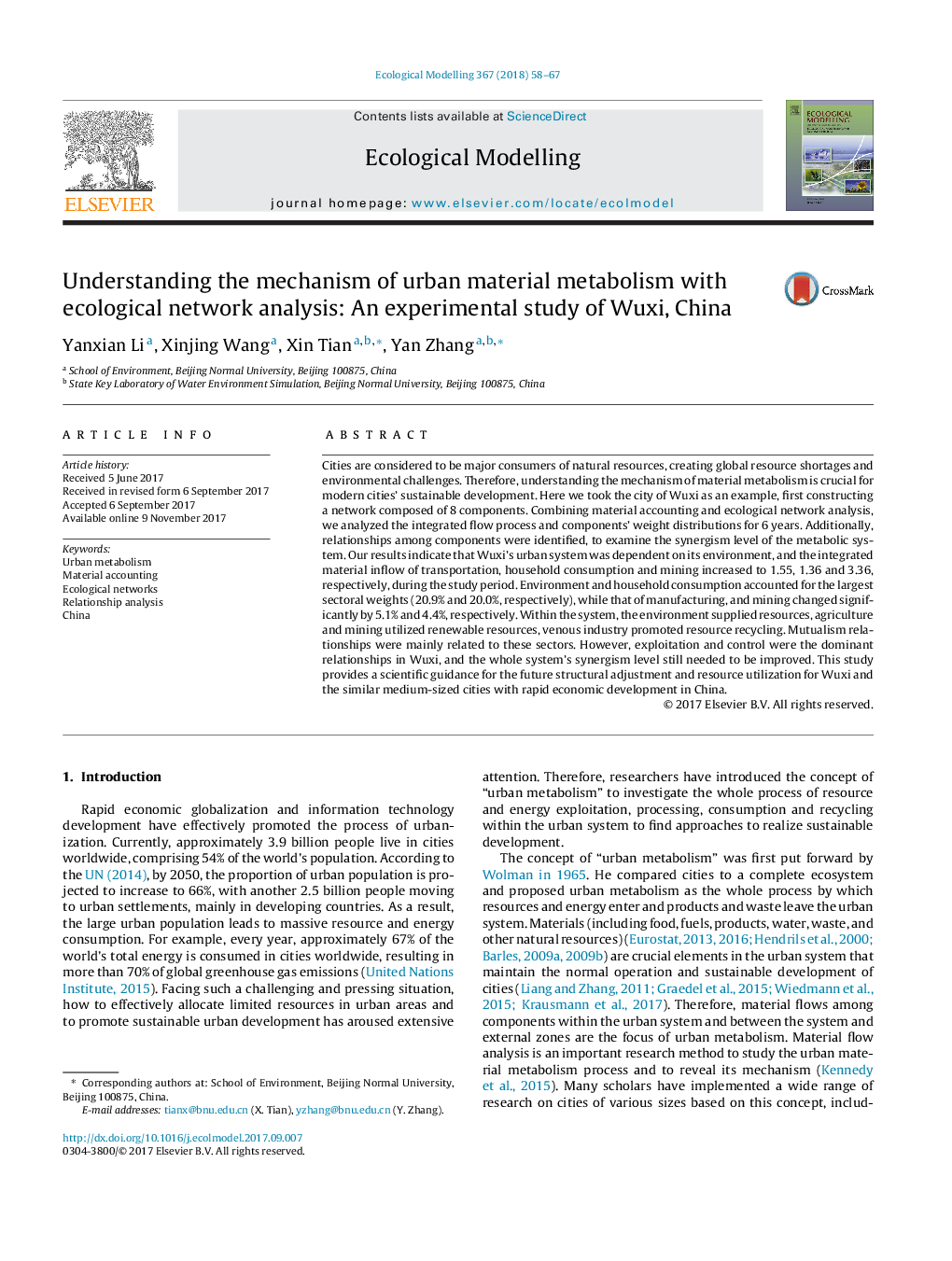| Article ID | Journal | Published Year | Pages | File Type |
|---|---|---|---|---|
| 8846168 | Ecological Modelling | 2018 | 10 Pages |
Abstract
Cities are considered to be major consumers of natural resources, creating global resource shortages and environmental challenges. Therefore, understanding the mechanism of material metabolism is crucial for modern cities' sustainable development. Here we took the city of Wuxi as an example, first constructing a network composed of 8 components. Combining material accounting and ecological network analysis, we analyzed the integrated flow process and components' weight distributions for 6 years. Additionally, relationships among components were identified, to examine the synergism level of the metabolic system. Our results indicate that Wuxi's urban system was dependent on its environment, and the integrated material inflow of transportation, household consumption and mining increased to 1.55, 1.36 and 3.36, respectively, during the study period. Environment and household consumption accounted for the largest sectoral weights (20.9% and 20.0%, respectively), while that of manufacturing, and mining changed significantly by 5.1% and 4.4%, respectively. Within the system, the environment supplied resources, agriculture and mining utilized renewable resources, venous industry promoted resource recycling. Mutualism relationships were mainly related to these sectors. However, exploitation and control were the dominant relationships in Wuxi, and the whole system's synergism level still needed to be improved. This study provides a scientific guidance for the future structural adjustment and resource utilization for Wuxi and the similar medium-sized cities with rapid economic development in China.
Related Topics
Life Sciences
Agricultural and Biological Sciences
Ecology, Evolution, Behavior and Systematics
Authors
Yanxian Li, Xinjing Wang, Xin Tian, Yan Zhang,
